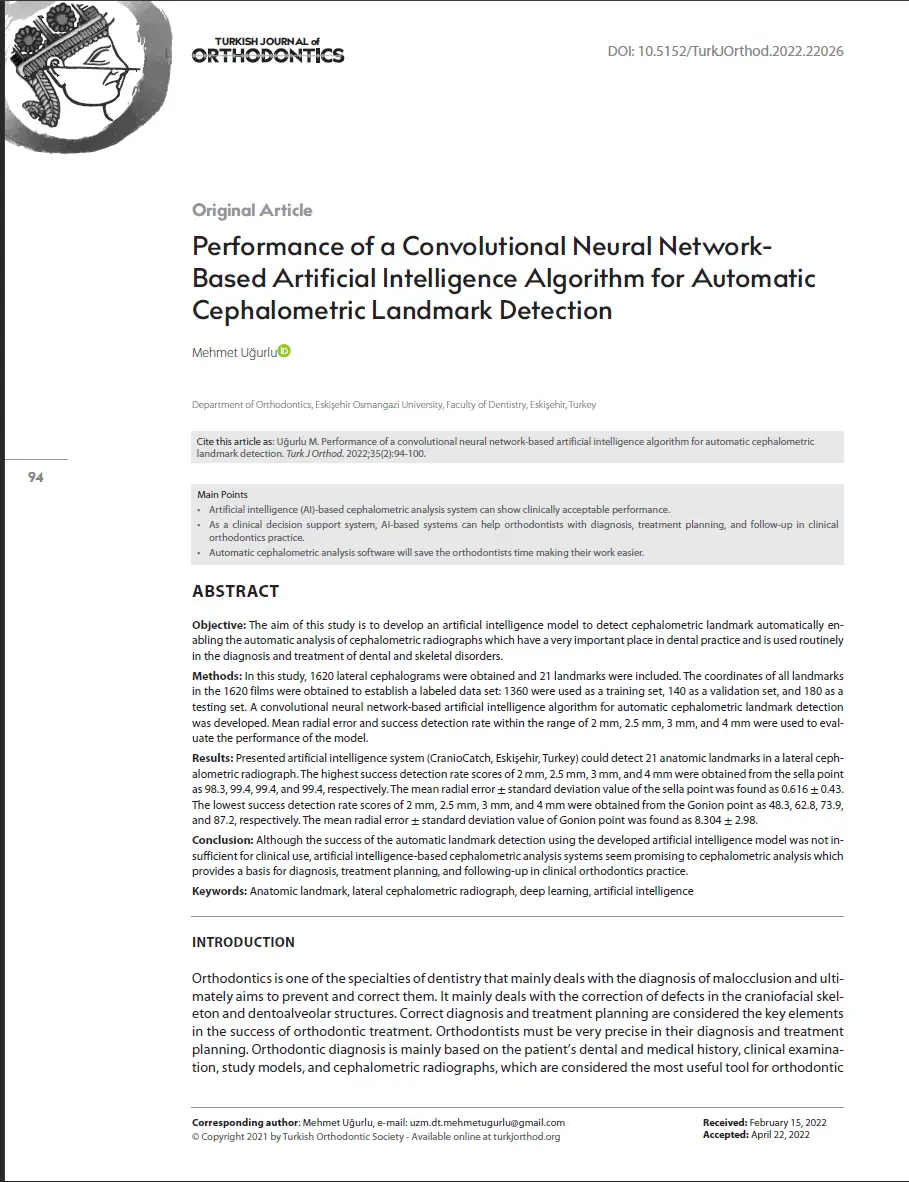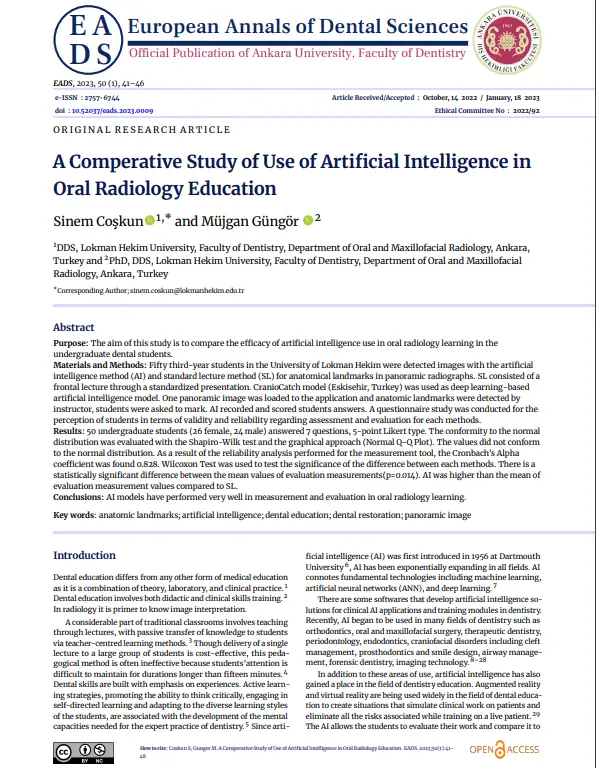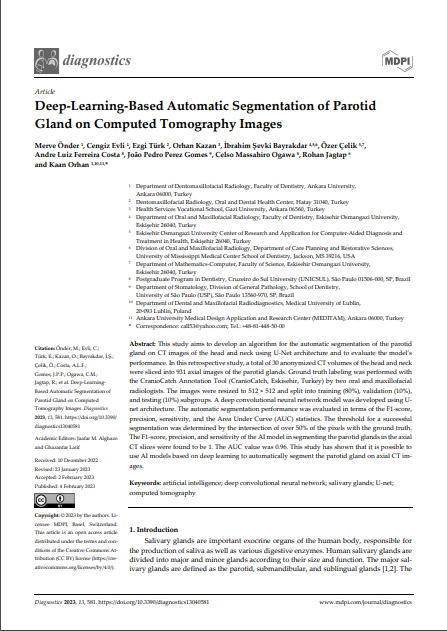An Artifıcial Intelligence Approach To Automatic Tooth Detection And Numbering In Panoramic Radiographs
Background
Panoramic radiography is a widely used imaging technique in dental practices because it allows for the visualization of both maxillary and mandibular teeth along with their supporting structures. This technique is preferred due to its relatively low radiation dose, short imaging time, and minimal burden on patients. The study investigates the efficacy of an artificial intelligence (AI) system, utilizing a deep convolutional neural network, for the automatic detection and numbering of teeth in panoramic radiographs.
Methods
The study utilized a dataset comprising 2482 anonymized panoramic radiographs from adult patients archived at Eskisehir Osmangazi University, Faculty of Dentistry, Department of Oral and Maxillofacial Radiology. The AI algorithm, CranioCatch (Eskisehir, Turkey), was developed using a Faster R-CNN Inception v2 model to automatically detect and number teeth. The performance of the AI was evaluated against human observation using a test set of 249 panoramic radiographs. Metrics such as true positive (TP), false positive (FP), and false negative (FN) rates were calculated for each jaw quadrant. Sensitivity, precision, and F-measure values were also computed using a confusion matrix.
Results
The AI system achieved 6940 true positive, 250 false positive, and 320 false negative results across all quadrants. The sensitivity, precision, and F-measure were 0.9559, 0.9652, and 0.9606, respectively, indicating a high level of accuracy in tooth detection and numbering.
Conclusions
The study concluded that the deep convolutional neural network system demonstrated a high success rate in detecting and numbering teeth on panoramic radiographs. Such AI systems could potentially replace human evaluators in this task, thereby supporting clinical decision-making processes.
I Want to Write a Scientific Research Project
CranioCatch is a global leader in dental medical technology that improves oral care in the field of dentistry. With AI-supported clinical, educational, and labeling solutions, we provide significant improvements in the diagnosis and treatment of dental diseases using contemporary approaches in advanced machine learning technology.
CranioCatch serves thousands of patients with dental health issues worldwide every day with its innovative technologies. That’s why we eagerly look forward to meeting our valued dentists who wish to work in the field of 'Scientific Research in Dentistry'.



 Contact Us
Contact Us

